
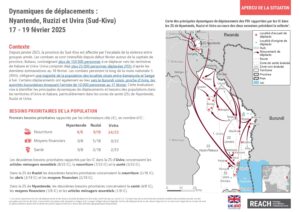
REACH RDC - Dynamiques de déplacements - Zones de santé de Nyantende, Ruzizi et Uvira, Sud-Kivu - 17-19 février 2025
PDF829.8K
The Democratic Republic of Congo has been plagued by a complex humanitarian crisis marked by localized violence and ethnic conflict for decades. These dynamics have been amplified by widespread health issues, such as recent Ebola outbreaks. In 2019, the Humanitarian Response Plan for the Democratic Republic of the Congo stated that an estimate of 12.8 million people were in need of humanitarian assistance − approximately 13% of the country’s population.
Due to this volatile situation and the need to launch adapted responses as quickly as possible IMPACT, through its initiative REACH and partner ACTED, is supporting humanitarian actors in strengthen assessment activities and implementation. IMPACT has also provided critical humanitarian information to aid actors and response planners since first deployed to the country.
The displacement crisis in North Kivu, Democratic Republic of Congo (DRC), is rapidly worsening, exacerbating existing vulnerabilities in a region already beset by severe and persistent needs. Our research highlights the urgent need for food assistance, the rising risk of gender-based violence (GBV) among internally displaced persons (IDPs), and the critical need for long-term solutions to support livelihoods and resilience.
Community voices from DRC
Community members in North Kivu are expressing a desperate need for food and stable employment. ‘We need food now, but we also need jobs to sustain our families in the long term,’ says a local resident from Goma.
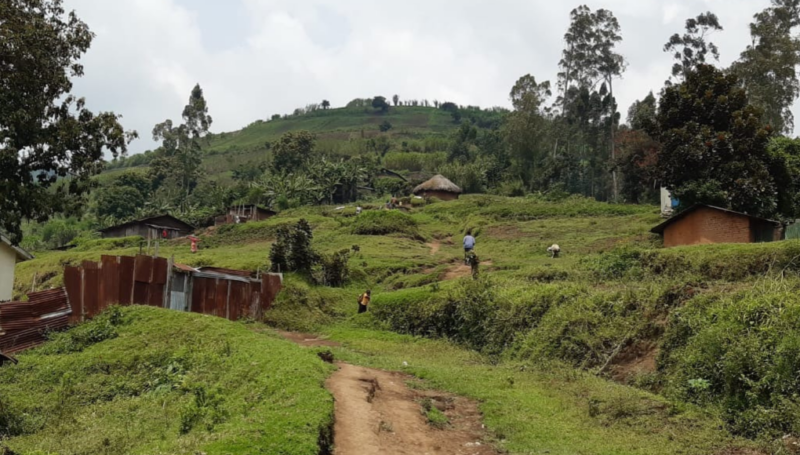
Eastern DRC is a vast region, home to over 100 million people. As of November 2024, nearly 6.9 million people have been displaced, making it one of the largest displacement...
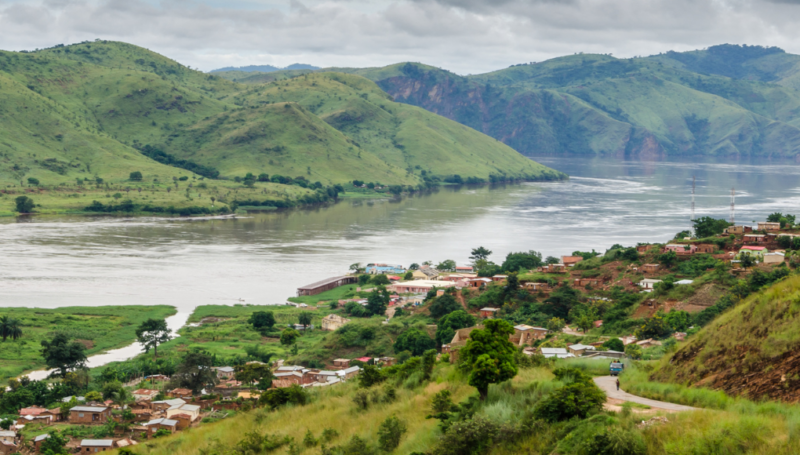
L’instabilité et les conflits à l’Est de la République Démocratique du Congo (RDC) ont entraîné un déplacement massif de la population, notamment dans la région de Goma, capitale du Nord-Kivu....
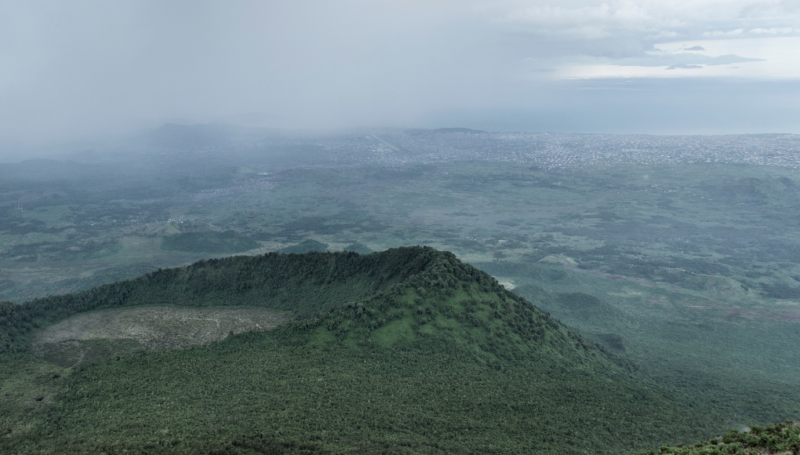
The displacement crisis in North Kivu, Democratic Republic of Congo (DRC), is rapidly worsening, exacerbating existing vulnerabilities in a region already beset by severe and persistent needs. Our research highlights...


REACH RDC - Dynamiques de déplacements - Zones de santé de Nyantende, Ruzizi et Uvira, Sud-Kivu - 17-19 février 2025
PDF829.8K

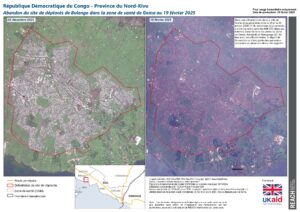
REACH RDC - Abandon de sites de déplacés à Goma et ses alentours au 18 février 2025 - Zone de santé de Goma, Nyiragongo, Karisimbi et Kirotshe, Nord-Kivu
PDF17.1M

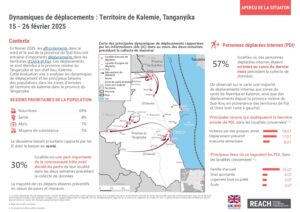
REACH RDC - Dynamiques de déplacements - Territoire de Kalemie, Tanganyika : 15 - 26 février 2025
PDF953.1K

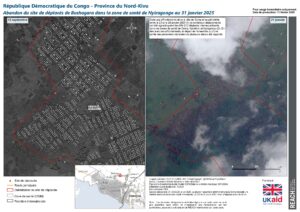
REACH RDC - Abandon de sites de déplacés au 31 janvier 2025 - Zone de Santé de Nyiragongo, Nord-Kivu
PDF46.7M

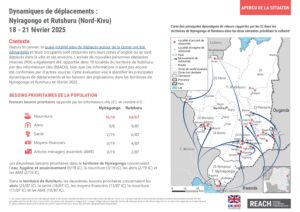
REACH RDC - Dynamiques de déplacements - Territoires de Nyiragongo et Rutshuru, Nord-Kivu - 18-21 février 2025
PDF1.1M

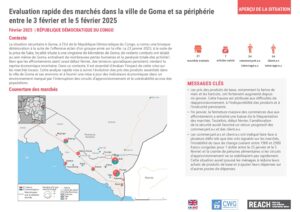
REACH RDC_SO_Rapid Market Assessment Goma_2502
PDF4.6M

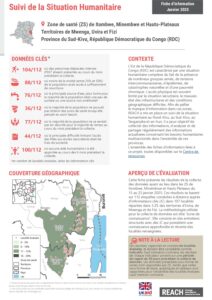
REACH RDC - Suivi de la situation humanitaire (HSM) - Zones de santé de Itombwe, Minembwe et Hauts-Plateaux, Sud-Kivu -
PDF1.2M

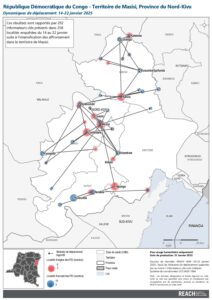
REACH RDC - Territoire de Masisi - Dynamiques de déplacement (HSM) - 14-22 janvier 2025
PDF1.2M


REACH_RDC_Base-de-donnees_ICSM_Février_2025
XLSX908.8K

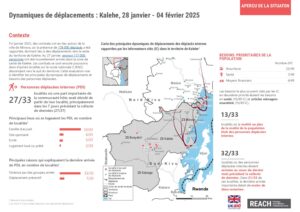
REACH RDC - Dynamiques de déplacements - Territoire de Kalehe, Sud-Kivu - 28 janvier - 04 février 2025
PDF1.3M

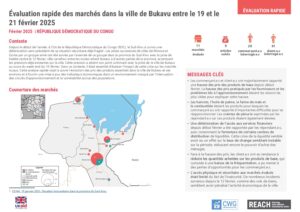
REACH - RDC - ICSM - Evaluation rapide des marchés de Bukavu - 19 au 21 février 2025
PDF2.6M


REACH – RDC – ICSM – Factsheet – Février 2025
PDF6.6M

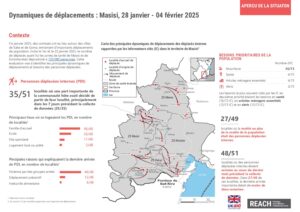
REACH RDC - Dynamiques de déplacements - Territoire de Masisi, Nord-Kivu - 28 janvier - 04 février 2025
PDF1.0M

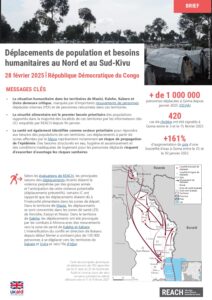
REACH RDC - Brief : Déplacements de population et besoins humanitaires au Nord et au Sud-Kivu - 28 février 2025
PDF1.0M


REACH RDC - Dynamiques de déplacements - Territoire de Kalehe et Kabare, Sud-Kivu - 13-15 février 2025
PDF2.2M

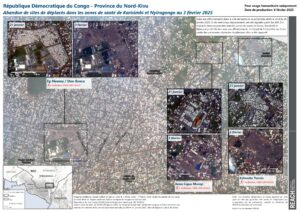
REACH RDC - Goma - Abandon de sites de deplaces - zones de sante Karisimbi et Nyiragongo - au 3 fevrier 2025
PDF14.8M